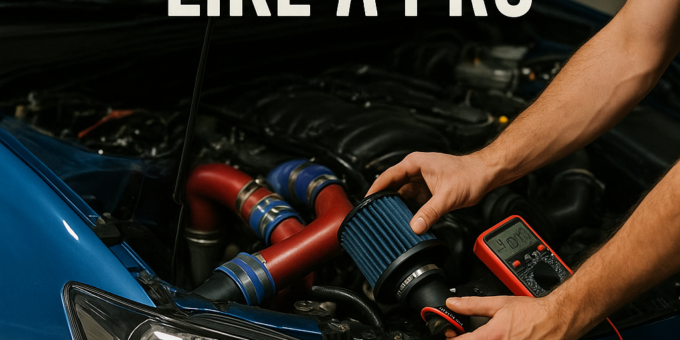
Introduction
Every car enthusiast dreams of more power, better handling, and the adrenaline rush of knowing their car performs better than stock. The art and science of tuning your car like a pro isn’t just about raw speed—it’s about optimization, precision, and passion. This guide walks you through every aspect of tuning, offering deep insights that will help you understand, implement, and enjoy the fruits of your mechanical labor.
Tuning Your Car Like a Pro
Tuning your car like a pro begins with a shift in mindset. You’re not just making changes—you’re customizing your car’s DNA. From ECU mapping to mechanical mods, everything matters. And yes, every detail counts.
When done right, tuning enhances acceleration, improves fuel efficiency, tightens up the suspension, and customizes the ride to your unique preferences. But when rushed or done wrong, it can lead to expensive repairs, voided warranties, or worse—engine failure. So, tread carefully but confidently, and always use reliable tools and expert advice.
What Is Car Tuning and Why Does It Matter?
Car tuning refers to modifying the internal and external components of a vehicle to improve performance, efficiency, and aesthetic appeal. Unlike routine maintenance, tuning is about enhancement. It allows you to extract more from your vehicle than the factory setup permits.
Manufacturers design cars with broad user bases in mind. That means compromises. Tuning, on the other hand, is personal. It lets you tailor your vehicle for track days, off-road fun, or daily spirited driving.
The Science Behind Engine Tuning
At the heart of engine tuning lies the combustion cycle—intake, compression, power, and exhaust. Fine-tuning each stage increases horsepower and torque.
When a tuner modifies engine parameters such as fuel-to-air ratio, ignition timing, and boost pressure, the goal is to achieve more efficient combustion. The result? More power, smoother performance, and better responsiveness.
Modern tuners use laptops and OBD-II connections, turning wrenching into a high-tech endeavor. It’s no longer just about feel—it’s about data.
Factory Settings vs Custom Tuning
From the factory, vehicles are tuned for emissions compliance, fuel economy, and longevity. That’s smart for the average driver—but not for someone chasing performance.
Custom tuning removes these factory limitations, giving you control over:
-
Throttle response
-
Turbo boost levels
-
Ignition advance
-
Air/fuel ratios
This isn’t guesswork—it’s calibrated modification based on real-time data. Whether through an ECU flash or a piggyback unit, custom tuning rewrites your car’s performance script.
The Relationship Between Tuning and Performance
Tuning and performance are inseparable. You can install a big turbo, but without proper tuning, your engine won’t know how to use it. Performance tuning ensures that every upgrade communicates with the ECU, sensors, and driveline correctly.
Performance gains aren’t always about peak horsepower. Responsiveness, torque delivery, and drivability matter just as much. A well-tuned 250hp car can feel better than a poorly tuned 400hp beast.
Understanding Your Vehicle’s Baseline Performance
Before making any modifications, know what you’re starting with. Baseline testing via a dynamometer (dyno) tells you:
-
Horsepower and torque at the wheels
-
Air/fuel ratios under load
-
Powerband characteristics
These readings serve as your reference point. Once you tune, you’ll compare new results to your baseline to measure improvement accurately.
How to Read Your Dyno Results
Dyno graphs can look intimidating, but they’re simple when broken down:
-
The X-axis = RPM
-
The Y-axis = horsepower or torque
-
Look for smooth, progressive curves
-
Sharp dips or irregularities suggest mechanical or tuning issues
A good tune maximizes area under the curve—not just peak numbers. Smoothness = drivability.
Essential Performance Metrics to Track
Besides horsepower and torque, track:
-
Air/Fuel ratio: should be around 12.5:1 under load (gasoline)
-
Boost pressure: varies by setup, but must stay consistent
-
Knock levels: should be minimal or nonexistent
-
Engine temps: high temps can mean too lean or overboost
With tools like HP Tuners or COBB Accessport, you can log and review all this data.
ECU Remapping Explained
ECU remapping rewrites the software that controls engine behavior. You’re telling the brain of your car to think differently.
What’s changed?
-
Ignition timing
-
Fuel injection volume and timing
-
Turbo boost control
-
Rev limiter and speed governor
Remaps are done via OBD-II ports. The tuner uploads a new “map,” adjusting parameters in real time. It’s like giving your car a new operating system—faster, leaner, stronger.
Chip Tuning: Still Relevant in 2025?
Chip tuning was popular in older cars before OBD-II became standard. It involved physically replacing the ROM chip in the ECU with a modified version.
While outdated for most modern cars, it’s still relevant for classics. For pre-1996 vehicles, this remains a viable—and sometimes the only—option for tuning.
Piggyback Systems vs. Full Reflash
Piggyback systems modify signals going to the ECU without rewriting its software. They’re plug-and-play, reversible, and usually cheaper.
Full reflashes overwrite factory software entirely, offering deeper customization. However, they are harder to reverse and may void warranties.
Choose based on your needs:
-
Light mods = Piggyback
-
Full build = Reflash
Carbureted vs Fuel-Injected Engines
Tuning a carburetor is mechanical: jets, screws, and vacuum lines. Fuel injection tuning is digital: laptops, software, and sensors.
Carbs require trial-and-error tuning. Fuel injection uses data-driven precision. Modern tuners gravitate toward EFI for its accuracy and adaptability.
Still, there’s an undeniable romance in tuning a carb by ear.